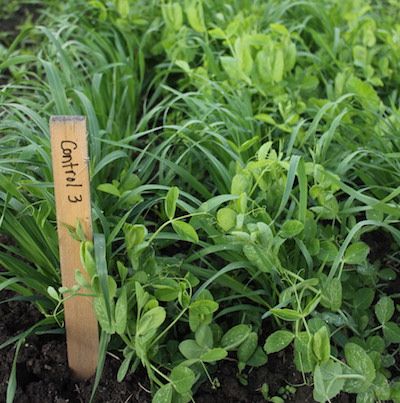No-till fall broccoli in northern Ontario
Research Report 2020
Farmer-Researchers
Ryan Spence &
Isabelle Spence-Legault
Field Good Farms / J’me Champ Bien
West Nipissing County
Watch video of Ryan’s DIY roller crimper below or linked here >

IN A NUTSHELL
Ryan and Isabelle tested whether a crimped cover crop of rye and hairy vetch reduced tillage, cultivation and irrigation for their fall broccoli crop.
- Compared to tillage, the cover crop residue provided sufficient mulch to significantly reduce weeding time and increase soil moisture throughout the growing season by 11%. There was adequate rainfall, so they didn’t need to use irrigation in the tillage plots.
- Broccoli grown in crimped cover crop mulch had around half the marketable yield compared to the tilled plots.
- The yield loss combined with no difference in total labour made this no-till system as tested unviable for broccoli production.
TAKE HOME MESSAGE
While the crimped cover crop of rye and hairy vetch provided sufficient mulch to significantly increase soil moisture and total labour was not different, yield loss made growing no-till fall broccoli in a bed of crimped rye and hairy vetch less profitable compared to using tillage.
NEXT STEPS
Ryan and Isabelle’s results are counter to successes by others like Ron Morse with no-till broccoli. They will not try this specific system again, but observations from this trial make them curious to answer a few follow-up questions:
Would additional compost or other organic fertilizer boost the head size of broccoli grown in crimped cover crops?
Is a rye-crimped cover crop for fall broccoli production better suited to gardens that have been no-till for longer vs. the first year of no-till?
This project was funded by the Canadian Agriculture Partnership, a five-year federal-provincial-territorial initiative, and FedNor.



